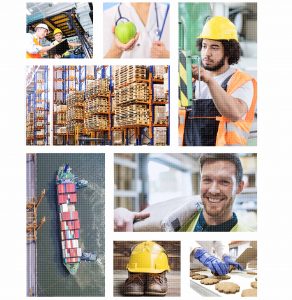Hi Steve. Can you please give us an overview of your experience?
I am a CPA with over 20 years’ experience working in operational improvement. I work with businesses to deliver sustainable performance improvement through the engagement of its people. Working with my clients, I provide training, facilitation, coaching and team development. The last 4 years I have worked at Think Perform delivering training to blue collar and white collar employees across a number of businesses and industries, including: advanced aerospace component manufacturing, pallet repair, large scale printing, roof tiling, window and door systems and fabrication and transport supplies.
What would be the one thing that you hope participants take away from their Think Perform course?
Our key objective is to leave our clients with sustainable continuous improvement programs. To achieve that, we hope that our participants, after completing the training, are not only confident in the Lean tools but they also have the mindset to want to contribute to the improvement of the business.
What are common problems that participants face when learning or applying Lean concepts and techniques? Do you have any advice to overcome this?
The tools can be foreign so that is why we spend time applying the tools in the workplace, working on business processes. The challenge can be that when they go to apply the tools at their workplace they may forget exactly how to apply the tools. We work to overcome this through providing on-the-floor coaching. We also provide display boards, for the key lean techniques that provide a summary of the tool and its key steps. It is important that these are displayed in their work areas and at the communication boards, so they can be referred to when needed.
What is your favourite Lean/Continuous Improvement tool/technique/concept?
My favourite is our waste module where we introduce to the teams the concepts of value-added, non value-added activities and introduce the 8 wastes.
This is generally the first time that they have thought about their job as a part of a process and they learn the impact of their work on the people further up the line. We usually find that they have never sat as a team and asked ‘how can we do this better’?
The learning for the group is enormous. They start to challenge what has just been accepted as normal practice. We look for quick wins that we can start on immediately to build momentum for the program. It is important at this point for management to get behind this and demonstrate their commitment to the program.
What is the best/most unique/most interesting way that you’ve seen clients apply Lean tools and techniques?
A client of ours has done an excellent job implementing 5S at their site. They operate over 3 shifts and each shift complained that the previous shift was leaving the work area in a mess. This was causing delays in start-up, as operators had to replenish stock, empty bins and wasting time looking for missing items. For the 5S training, we allocated each shift a specific work area and they were given the task of developing 5S standards and identifying and implementing ideas to improve workflow and reduce waste.
The teams really involved themselves in the project and worked together to develop a number of great initiatives: purpose-built trolleys, cleaning stands, quality display boards, line marking, visual standards and start of shift checklists. The change in the place has been enormous. There has been a reduction in cleaning times, improved equipment up-time, improved productivity and an overall improvement in the look of the factory.
Any last tips/advice for readers of this email?
Most people have heard of the continuous improvement model PDCA, which stands for Plan, Do, Check and Act. We cover this in our training but we have been receiving requests for more information on the ‘Check’ stage of the model.
For the ‘Check’ stage, I apply what is referred to as an After Action Review (AAR). The AAR comes from the US army and is used by companies around the world as a way to assist learning and continuous improvement. I have developed a one page template that teams complete after completing the ‘Do’ stage of a CI project.
The process involves the Project Team Leader gathering their team together to address a series of questions about the project results.Typical questions are:
- What was supposed to happen?
- What did go well and why?
- What did not go well and why?
- What are the lessons learned?
Weaving a disciplined process for learning, through experience, into the project review promotes individual and team learning and produces action plans that are owned by the participants.





